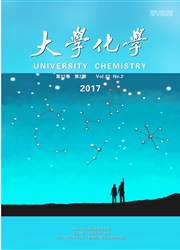

 中文摘要:
中文摘要:
采用恒电位测试方法研究了当载荷范围为5~20 N、电位范围为–0.6~0.3 V时镍基合金K4169/氧化铝陶瓷球摩擦副在人工海水中的腐蚀磨损行为,并根据试验数据获得了K4169合金的腐蚀磨损图(总损失图、磨损机理图和交互作用图).结果表明:K4169合金在室温下的人工海水中有良好的耐腐蚀性能,腐蚀速率为0.004 2 mm/a;磨损量Wc为总损失量T值的87.1%~96.8%,表明腐蚀磨损中K4169合金的损失以机械磨损为主,腐蚀损失量Cw很小.以ΔCw/ΔWc为判据可知:协同作用、加和作用和对抗作用均存在于K4169合金在人工海水的腐蚀磨损中.
 英文摘要:
英文摘要:
In this study, the tribo-corrosion behavior of K4169 nickel-based alloy in sliding against an A1203 ceramic ball in artificial seawater was investigated using an potentiostatic method in applied loads of 5 N to 20 N and potentials from -0.6 V to 0.3 V. And wastage map, wear mechanism map and synergistic map of K4169 alloy were plotted according to the experimental data. The calculated corrosion rate of K4169 alloy was as low as 0.004 2 mm/a, indicating the alloy had good corrosion resistance in artificial seawater at room temperature. According to the wastage map, the total material loss rate ofK4169 alloy was contributed by wear loss because the ratio of wear loss rate to total material loss rate ranged from 87.1% to 96.8%. Corrosion loss had very limited impact on the total material loss. Two wear regimes, i.e. abrasion regime at higher load and abrasion-corrosion at lower load, were observed. Using △Cw/△Wc as the criteria, composite effects, i.e. synergistic effect, additive effect and antagonistic effect, were identified in the tribo-corrosion process.
 同期刊论文项目
同期刊论文项目
 同项目期刊论文
同项目期刊论文
 Fabrication of polymer/drug-loaded hydroxyapatite particle compositefibers for drug sustained releas
Fabrication of polymer/drug-loaded hydroxyapatite particle compositefibers for drug sustained releas Two unique entangling ZnII/CdII coordinationframeworks featuring multiform helical motifs basedon lo
Two unique entangling ZnII/CdII coordinationframeworks featuring multiform helical motifs basedon lo Two clusters-based coordination polymers constructed fromconformation-?exible cyclohexanetetracarbox
Two clusters-based coordination polymers constructed fromconformation-?exible cyclohexanetetracarbox 期刊信息
期刊信息
